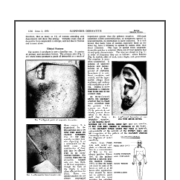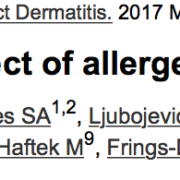Contact Dermatitis Awareness Ribbon
Announcing the Contact Dermatitis Awareness Ribbon:
On March 19, 2016 a Montessori Teacher and a Customer Service Representative, two mothers with children suffering with allergic contact dermatitis, joined together to start a patient-centered outreach group on Facebook called “Eczema, Contact Dermatitis and Patch Testing Alliance”. Currently, this 1,925 member focus group is providing educational resources to sufferers of allergic contact dermatitis worldwide.
As the eve of the anniversary of the group approached the lead administrator (Misha Bertolino, MA) raised the question, Why is there not a contact dermatitis awareness ribbon?
**Contact dermatitis costs a reported $1,529 million/year in medical costs!
**Contact dermatitis is the 8th most costly skin disease!
**Contact dermatitis is preventable!
The Contact Dermatitis Awareness Ribbon is indeed very much needed!
In a collaborative effort, the Eczema, Contact Dermatitis and Patch Test alliance along with artist Janna Vassantachart, MD, logistician Chandler Rundle, BS, practicing contact dermatitis specialists, and global advocates – the orchid (eczema) and teal (allergy) contact dermatitis awareness ribbon has become a reality.
This symbol can be worn to show support and solidarity for the millions of people who suffer from this disease. In alignment with these symbols, our mission at the Dermatitis Academy is to educate the public, the medical providers, the manufacturers and the legislators on ACD, while cultivating a community of support for those impacted by this disease.
With early diagnosis, education, and intervention, we HOPE for a future where allergic contact dermatitis can be controlled by remission or prevention.
Please visit the Dermatitis Academy to learn more about allergic contact dermatitis, allergens, and patch testing and to download the Contact Dermatitis Awareness Ribbon.
Please share!




